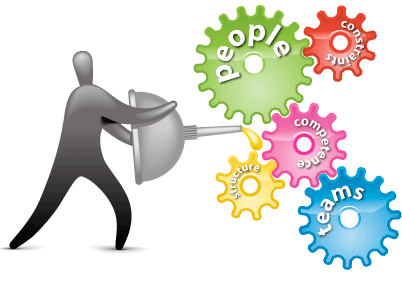 Oh, boy, I failed again!
Oh, boy, I failed again!
I recently facilitated an event where at one point I struggled mightily.
As I reflected on how I might have done better, I recalled the note and vote technique:
- Note and vote (aka Nominal group technique (NGT)) is a structured method for brainstorming/decision making that encourages contributions from everyone.
How valuable this would have been at the time!
The next time you need to make a decision or come up with a new idea in a group and things feel like they’ve come off the rails, call a timeout and give the following “note-and-vote” technique a try.
Why “note and vote”?
In a synchronous discussion (aka a meeting) where the goal is problem identification, solution generation, and/or decision making, things can quickly derail and stop the group from making headway.
The reasons for this can be many:
- Some group members are much more vocal than others
- Some group members think better in silence
- Some members may not be participating (put the screens away?)
- The group may not easily generate quantities of ideas
- All or some group members are new to the team
- The issue is controversial or there is heated conflict
How to use the Nominal Group Technique
- Define the Problem: State/clarify the problem as needed until everyone understands it and agrees that is the problem to work on now.
- Note: Distribute post-its and pens to each person. Set a timer for five minutes. Everyone writes down as many ideas as they can. Individually. Quietly. All of the notes won’t be shared with the group, so nobody has to worry about writing down dumb ideas.
- Self-edit: Set the timer for two minutes. Each person reviews his or her own set of post its and picks one or two, maybe three favorites. Individually. Quietly.
- Share and Capture: One at a time, each person shares his or her top ideas by putting the post its on the white board. No sales pitch. Just read your notes and move on.
- Variation: Create hybrid ideas combining parts of two or more ideas or build on another’s ideas – see Plussing)
- Vote: Set the timer for five minutes. Each person chooses a favorite from the ideas on the whiteboard. Individually. Quietly. They must commit their vote to paper.
- Share and Capture: One at a time, each person says their vote. A short sales pitch may be permissible, but no changing of votes! Say what you wrote. Capture the votes on the whiteboard. (Dots work well.)
- Decide: Everyone’s voice was heard. Time to decide. There are no perfect decision-making rules. There are strengths and weaknesses to each of the following schemes:
- Consensus – Requires that a majority approve a given course of action, but that the minority agree to go along with the course of action. In other words, if the minority opposes the course of action, consensus requires that the course of action be modified to remove objectionable features. (See: Fist to Five)
- Benevolent Dictatorship: She gets to make the final call – not the group. BD can choose to respect the votes or not.
- Random: The group leaves the choice to chance. Put the options in a hat and pull out the winner…or flip a coin.
- Unanimity (12 angry men): The group discusses the issue until it reaches a unanimous agreement.
- Rejoice: Hopefully, this all took only ~15 minutes! And you likely have reached a pretty good decision. Perfect? Maybe not, but it’s quite likely better than what you’d get with a hour of the old way.
Benefits
- Folks have quiet time to think
- Parallel processing is better than serial
- Group gets voting commitment
- “Note And Vote”: How Google Ventures Avoids Groupthink
- Virtual Sticky Notes w TeamPut
- The Quality Toolbox, Second Edition
- WikiPedia on Nominal Group Technique
- Delbecq / VandeVen “A Group Process Model for Problem Identification and Program Planning,”
